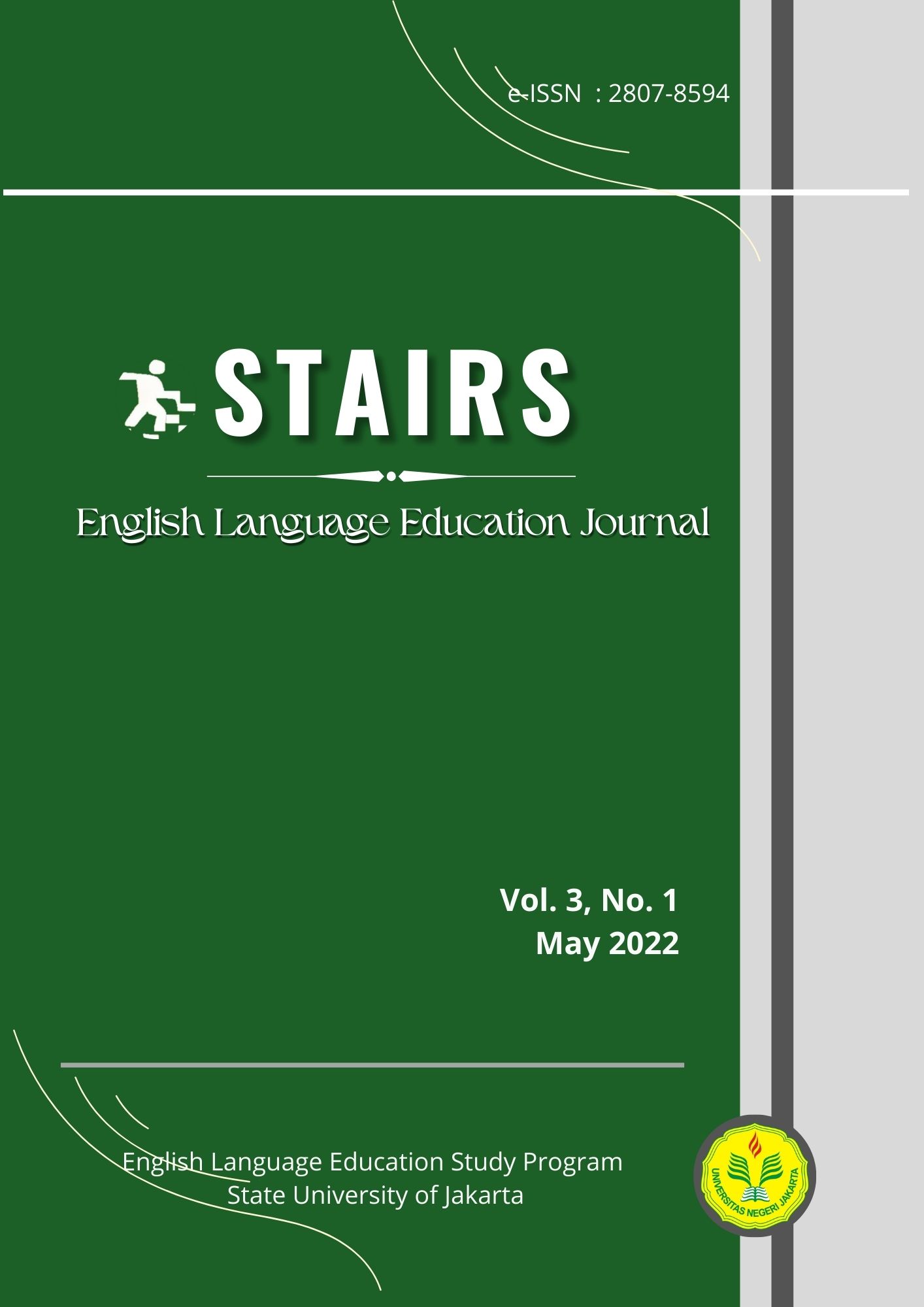Digital Comic Strips as Multi-Modal Text for Learning Interpersonal and Transactional Text in Junior High School: A Content Analysis
DOI:
https://doi.org/10.21009/stairs.3.1.5Keywords:
Content Analysis, Digital Comic Strips, Interpersonal Text, Transactional TextAbstract
This research aimed to analyze the content of the digital comic strips for learning interpersonal and transactional text at Junior High School levels. The research was conducted based on the research questions: (1) How is the suitability of the digital comic strips used for grade 8 Junior High School in terms of the content of the interpersonal and transactional text? (2) How do the digital comic strips meet the criteria of digital learning material? The research used qualitative content analysis the instrument of which was adapted from the Indonesia Minister of Education and Culture Indonesia Syllabus and three Digital Learning Material Framework. The data was sourced from the digital comic strips uploaded on social media and comic strips web. It was revealed that 95% of all of the digital comic strips already have the language features that the Indonesia Education and Culture Minister stated on the syllabus, also accomplish the digital material learning criteria from accessibility and content by The National Center for Accessible Educational Resources (AEM), PRIMO (Peer-Reviewed Instructional Materials Online) Selection Criteria, and Petri Nokelainen. The findings revealed promising future to use digital comic strips as an instructional reading materials.
References
Al-Fajri A.T. (2018). Pentingnya Penggunaan Pendekatan Multimodal dalam Pembelajaran. Waskita: Jurnal Pendidikan Nilai dan pembangunan Karakter, Vol. 2. No. 1. Retrieved from : https://waskita.ub.ac.id/index.php/waskita/article/view/6 (p. 1-3).
Balafa-Rodosthenous, M., Georgiou, A., & Pitri, E. (2019). Production of Multimodal Texts in Secondary Education: A Case Study. Puncturn, 5(1): 216-234. Retrieved: https://www.researchgate.net/publication/337889866_Production_of_multimodal_texts_in_Secondary_Education_A_case_study.
Cahyaningati, Desi Tri. (2018). The Use of Multimodal Text in Enhancing Engineering Students’ Reading Skill. International Journal of Language Education, 2(2): 35. DOI:10.26858/ijole.v2i2.6360.
Chalkiadaki, Areti. (2018). A Systematic Literature Review of 21st Century Skills and Competencies in Primary Education. International Journal of Instruction, v11 n3 p1-16.
Enteria, O. C.., & Pet, H. (2019). The Effectiveness of Developed Comic Strips as Instructional Materials in Teaching Specific Science Concepts. International Journal for Innovation Education and Research 7(10):876-882. DOI:10.31686/ijier.Vol7.Iss10.1835.
Ikasari, B., Drajari, A. N., & Sumardi. (2019). The Use of Multimodal Texts in an English Classroom of Hard-of-Hearing Learners. Pedagogy Journal of English Language Teaching. Institut Agama Negeri Metro. (p. 15-17).
Jamil, N.A., & Aziz, A.A. (2021). The Use of Multimodal Text in Enhancing Students’ Reading Habit. Malaysian Journal of Social Sciences and Humanities (MJSSH), Volume 6, Issue 9.
Kamil, A., Komariah, E., & Natsir, Y. (2017). The Use of Comic to Improve Students’ Reading Comprehension Skill at Junior High School. English Education Journal, Vol.2, pp. 1-7.
Kitson, L. (2011). Reconseptualising Understanding of Texts, Readers, and Contexts: One English Teacher's Response to Using Multimodal Texts and Interactive Whiteboards. English in Australia 46(3). 76-86.
Kress, G., & Van Leeuwen, T. (2001). Multimodal Discourse: The Modes and Media of Contemporary Communication. London: Arnold Publishers.
Manik, R. M. S. (2019). The Effectiveness of Comic Strip as Media to Improve the Students’ Reading Comprehension on Narrative Text of MTs Ar-Rahman Langkat. KnE Social Science: The Second Annual International Conference on Language and Literature, Vol 2019. http://dx.doi.org/10.18502/kss.v3i19.4918.
Meneses, A., Escobar, José-Pablo,. & Véliz, S. (2018). The Effects of Multimodal Texts on Science Reading Comprehension in Chilean Fifth-graders: Text Scaffolding and Comprehension Skills. International Journal of Science Education, 40:18, 2226-2244, DOI: 10.1080/09500693.2018.1527472.
National Center on Accessible Educational Materials. (AEM). (2021). National Center on Accessible Educational Materials. 20/05. https://aem.cast.org/acquire/vetting-accessibility#.XG2ECi2ZOis.
Nokelainen, P. (2005). Conceptual Definition of the Technical and Pedagogical Usability Criteria for Digital Learning Materials. The University of Tampere and Hame Polytechnic, Finland.
Nunan, D. (2004). Task-Based Language Teaching. Cambridge: Cambridge University Press.
http://dx.doi.org/10.1017/CBO9780511667336.
Pirini, J. (2017). Approaches to Multimodal Discourse Analysis. New York: Oxford University Press.
PRIMO. (2017). Peer-Reviewed Instructional Material Online. 20/5. https://acrl.ala.org/IS/instruction-tools-resources-2/pedagogy/primo-peer-reviewed-instruction-materials-online/primo-selection-criteria/
Verhoeven, L. & Perfetti, C. (2008). Advances in Text Comprehension: Model, Process and Development. Applied Cognitive Psychology 22: 293–301.



